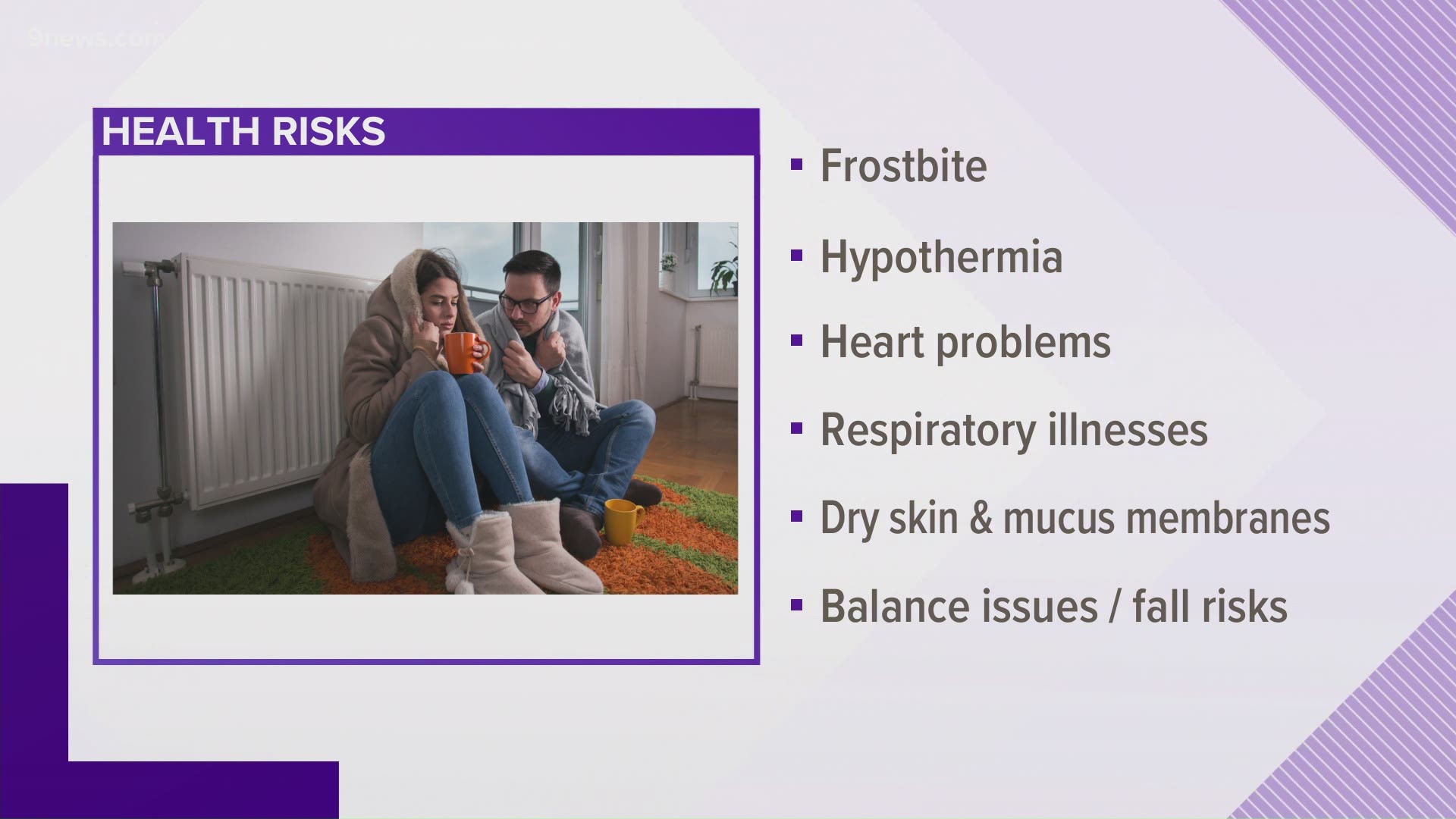COLORADO, USA — Bitterly cold temperatures will move into Colorado with temperatures possibly plummeting below zero in Denver and across much of Colorado on Thursday morning.
With temperatures that cold, you'll want to limit your time outside, especially any time outside with exposed skin. At -5 degrees and a wind speed of 30 mph, frostbite will happen in about 10 minutes, according to UCHealth.
Frostbite is when the skin and other tissues get damaged from exposure to freezing temperature and happens when exposed skin gets very cold causing ice crystals to form. This leads to the blood vessels in that area freezing, causing the affected areas to go without blood, nutrients and oxygen.
Below are some of the signs that you might be suffering from frostbite.
- Shivering is the first sign the body is losing heat
- Numbness
- Pale color to the skin
- Clumsy movements
- Pain that persists for 45 minutes after rewarming
- Following rewarming, increased redness or discoloration
Preventing frostbite
If you do have to go outside, there are things you can do to protect yourself. Below are some tips from the UCHealth Burn and Frostbite Center.
- Dress in layers and keep outerwear dry.
- Choose loosely woven fabric for the inside layer (wool, silk, polypropylene). These fabrics hold more heat and help avoid excessive perspiration.
- When outside in cold temperatures, take frequent breaks indoors and assess hands, feet, ears and nose.
- Cover your head – wear a hat and earmuffs.
- Wear heavy mittens instead of gloves. The collective body heat from the fingers being together keeps the hand warm.
- Two pairs of thinner socks provide better insulation than a single pair of thicker socks.
- Be prepared when traveling in cold weather. Keep a winter survival kit in the car that includes blankets, matches and extra clothes.
What to do if you suspect you have frostbite?
People who think they have frostbite should get into a warm environment and remove wet clothing.
Don't rub affected areas because that can cause more damage.
People that believe they have frozen fingers, toes or other extremities should wait to rewarm the affected areas until they're sure they won't refreeze, doctors said.
The best way to rewarm them is by using warm water that is about 104 degrees. People with frostbite need to get medical attention within 12-24 hours of rewarming the affected areas, according to doctors. This can help save the areas from possible amputation.
Effects of frostbite
The possible long-term effects include:
- Change in sensation of the injured area, including cold sensitivity, muscle weakness or joint stiffness
- Chronic pain, secondary to nerve damage
- Damage to sweat glands, cracking skin and nail loss
- Possible need for amputation of the damaged digits or limb
SUGGESTED VIDEOS: Severe Weather

